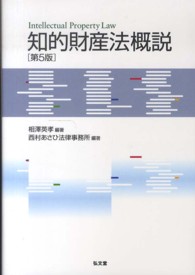- ホーム
- > 洋書
- > 英文書
- > Science / Mathematics
Full Description
The author proves the existence of an almost full measure set of $(3n-2)$-dimensional quasi-periodic motions in the planetary problem with $(1+n)$ masses, with eccentricities arbitrarily close to the Levi-Civita limiting value and relatively high inclinations. This extends previous results, where smallness of eccentricities and inclinations was assumed. The question had been previously considered by V. I. Arnold in the 1960s, for the particular case of the planar three-body problem, where, due to the limited number of degrees of freedom, it was enough to use the invariance of the system by the SO(3) group.
The proof exploits nice parity properties of a new set of coordinates for the planetary problem, which reduces completely the number of degrees of freedom for the system (in particular, its degeneracy due to rotations) and, moreover, is well fitted to its reflection invariance. It allows the explicit construction of an associated close to be integrable system, replacing Birkhoff normal form, a common tool of previous literature.
Contents
Background and results
Kepler maps and the Perihelia reduction
The P-map and the planetary problem
Global Kolmogorov tori in the planetary problem
Proofs
Appendix A. Computing the domain of holomorphy
Appendix B. Proof of Lemma 3.2
Appendix C. Checking the non-degeneracy condition
Appendix D. Some results from perturbation theory
Appendix E. More on the geometrical structure of the P-coordinates, compared to Deprit's coordinates
Bibliography







